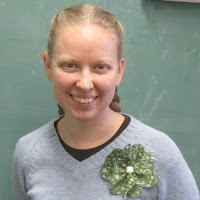 |
| Photo: Evelyn J Lamb |
 |
| Mathematician Vivienne Malone-Mayes, a professor at Baylor University from 1966-1994. Her picture was just added to her Wikipedia page. Photo: The Texas Collection, Baylor University. CC BY-SA 2.0 |
Last month on her PLOS blog Absolutely Maybe, Hilda Bastian wrote about her efforts to improve the Wikipedia pages of black women in science by both expanding on the articles and by adding pictures to ones that don’t have them. She writes:
As I’ve been combing through what seems like a bottomless pit of digitized old black and white photos of white scientists, the Black History Month stories and tweets about African-American women scientists were mostly about the same small group – although this year, plus the fabulous supersonic boost by Margot Lee Shetterly and the women of Hidden Figures.
That’s not because the supply of African-American women scientists from the past with gripping stories is tapped out. It’s not. Rather, when it comes to the stories of black women scientists, Diann Jordan writes, “The harvest is plentiful but the laborers are few”.
There is some randomness about whose stories have been told, who had compelling, high quality photos taken, and which images have surfaced online. Mostly it’s not random, though. The odds are stacked against visibility in the historical record, as it was in life – and for many of the same reasons.Vivienne Malone-Mayes is one of the women Bastian mentioned in her post. Malone-Mayes got her Ph.D. in math from the University of Texas in 1966 after navigating challenges such as being ostracized by her fellow students and being barred from classes taught by R.L. Moore, venerated pedagogue and notorious racist. She was the first African American professor at Baylor University.
Read more...
Source: Blog on Math Blogs












